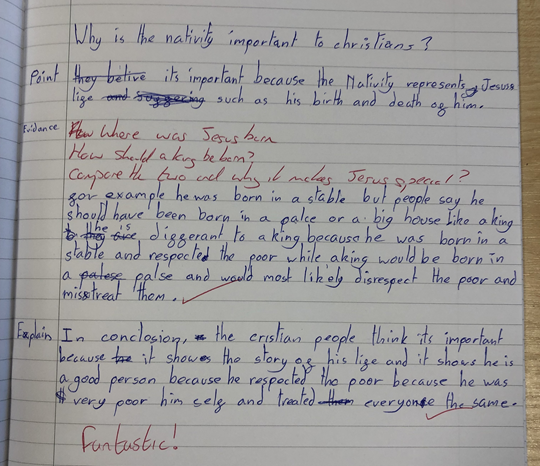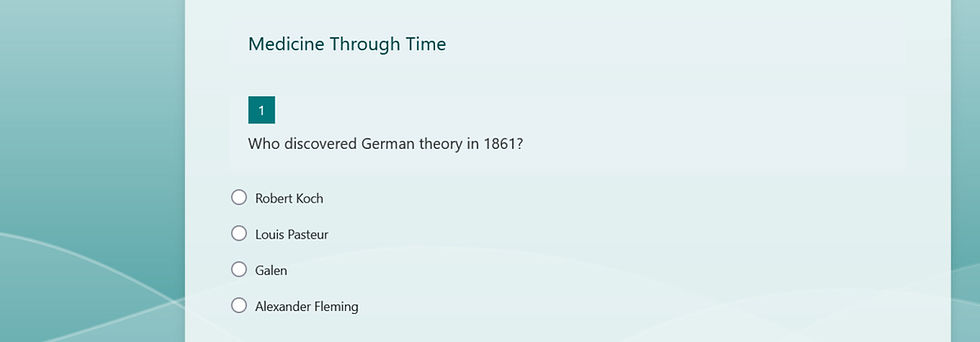I Say You Do
- fisherhistoryteach
- Feb 27, 2022
- 5 min read
Updated: Jun 26, 2022
In today’s blog post I am writing about: how I have marked so far in my career; what I am doing currently; and my ideas about how this may develop.
How I have marked in the past
So far in my career I have found marking one of if not the most difficult and time-consuming parts of teaching. I have always found it to be quite ineffective in understanding the live picture of how my classes are currently working. This has led me to reject all chances to mark. During my training year at my first placement school, I was encouraged to “tick and flick” so that the students had red pen in case the books were scrutinised. I did not like this as it just increased workload without benefiting my understanding of how the class were working. The only time I have marked in detail is when I would deep dive students’ assessments. However, I would always contemplate how effective this was because: were students even reading all of the comments I wrote, seeing all the times I boxed capital letters, underlined SFD (specific factual details), circled full stops and so on. All of this has led me to reflect and in turn develop my marking practice.
Live feedback
Hopefully if you read between the lines of the last paragraph, you would have come to the conclusion that I needed to perform live feedback. There has been a push during the last term at BA to develop and bring in more live marking so upon a discussion with colleagues we came up with a new strategy for teaching every other assessment called – I Say You Do (Thanks to my HOD for accidently coming up with this great title). I am going to attempt to describe it now in bullet point form because they may become quite describey:
Students are provided the question and exactly what structure they are going to write. "You are going to write paragraph one on this and then paragraph two on that."
The students are given a specific time from 5 – 8 minutes to write their paragraph. I will go around live mark students work. Here I can praise students who are doing the work correctly. I can also fix any misconceptions the students are developing. I can provide scaffolding and extension support for students too. During this whole process I am working the clock by saying things like “You have 5 minutes left”, and if I am prepared enough, I may have a timer on the whiteboard.
Next is the best part – I get the visualiser out and showing good work by students to the rest of the class. Until this academic year I had never had a visualiser in a classroom, and I did not realise how this would revolutionise my practice. At this stage I can also challenge misconceptions the students may have developed in their work.
Now we reach a crossroad. I can either allow the students to complete another paragraph independently or if I feel like they need the support I can reteach content to them or I can model an answer with them similar to a We Do in the Rosenshine method.
Process repeats.
This method is developed from the Rosenshine (I Do We Do You Do) method of teaching, hence the name we gave the process. The multi-academy trust I work for has pushed using Rosenshine in the classroom and while it has its benefits, I was mainly finding it difficult to get to the You Do stage of independent practice. This is why our 'I Say You Do' starts with the independent practice and then can pivot to a We Do if the students need the scaffolding or support.
Why I am doing it
While in the last paragraph I spoke about live marking specifically in relation to an assessment structure, but I am live marking during any period of independent practice. Live marking during independent work was part of my practice I didn’t do too much last year due to Covid-19 and keeping to social distancing. However, this year I am much more relaxed about it.
Live marking during independent practice is quite useful for providing me a live picture of how the students are doing during independent work. I am able to go around the classroom and praise students who are doing well. This may be a slight comment or a tick but this creates a positive feedback loop for the students who see that they are being praised for doing well and want to continue to be praised.
I can also challenge student’s misconceptions in their work. For example, with a y7 class I teach and am currently trailling this markign method we were writing explain paragraphs on what role monasteries had within society. The students work I am going to show you is a classic bright but lazy boy. He had simply wrote a one sentence answer instead of a paragraph thinking he could get away it. Perhaps last year a students like this may have gotten away with it as I wasn’t actively live marking. But once I saw what he was doing I gave him two question prompts to develop his answer. You can see he has taken the prompts to provide a more effective explain paragraph.

I suspect that ‘I Say You Do’ is going to do wonders in supporting students because it will reduce intrinsic load during assessments because it shall break the assessment into chunks. Rather than asking students to write a whole answer and them finding it overwhelming I am going to ask them to write just a single paragraph at a time. This should increase students’ confidence in writing. However, doing this all the time would not be beneficial as they need to develop the stamina to write a whole assessment in one go. This is why this form of assessment with live marking will not replace a traditional assessment as they need to develop these skills too.
Finally, the process of live marking and providing the students specific tailored feedback for their work really allows them to own their improvements and see what they can really do. In the example below I saw that this student was thinking about what he could write after his first sentence. I spoke with him and therefore wrote him some prompts based on out conversation. He utterly owned this, and he wrote a great paragraph during an RS lesson (I really enjoy teaching RS and may blog about it in the future). You can see that during my circulation of the room I came back to his work and wrote fantastic because he had earnt it and he seemed so motivated after he received the praise.

How will this evolve?
Firstly, the live marking in assessments will not replace traditional assessments or deep dive marking. There is and will always be a place for a situation where the students come in and write an assessment independently which I will then take in and provide personalised feedback for each individual student. While it is a time sink, I do enjoy and find this process beneficial.
In the assessment lessons where the students are writing paragraphs and I am showing good work on a visualiser or reteaching knowledge to fix misconceptions I need to improve the timings and work the clock better myself. I am aware of this because I have been trialling ‘I Do You Say’ with a y7 class and we have so far on two occasions failed to write three paragraphs. I am finding my current limit it 3 paragraphs and I seem to take up too much time in showing work/fixing misconceptions. This is something I shall work upon.
Thank you for taking the time to read with this blog post. If you have any questions or wish to provide feedback please free to contact me @fisherhistory1



Comments